Why the Coyotes are (finally) headed in the right direction on the ice
BUFFALO - Bill Armstrong settled into a chair in KeyBank Center's empty and dark press box last week, his iPhone and a large Starbucks cup resting on the ledge in front of him. Hours from hosting a Coyotes-Sabres game, the arena was silent save for the sounds of skates, sticks, and pucks on the ice below.
Armstrong, the Coyotes' general manager since fall 2020, watched his team's morning skate through black-rimmed glasses. Or, more broadly, he kept a close eye on Phase 2 of his plan to revive a long-languishing franchise.
Phase 1 saw Armstrong tear down most of what the previous regime built. His initial phase focused on building blocks - revamping the Coyotes' hockey operations department, accumulating as much draft capital as possible, and developing some of those picks into everyday NHL players.
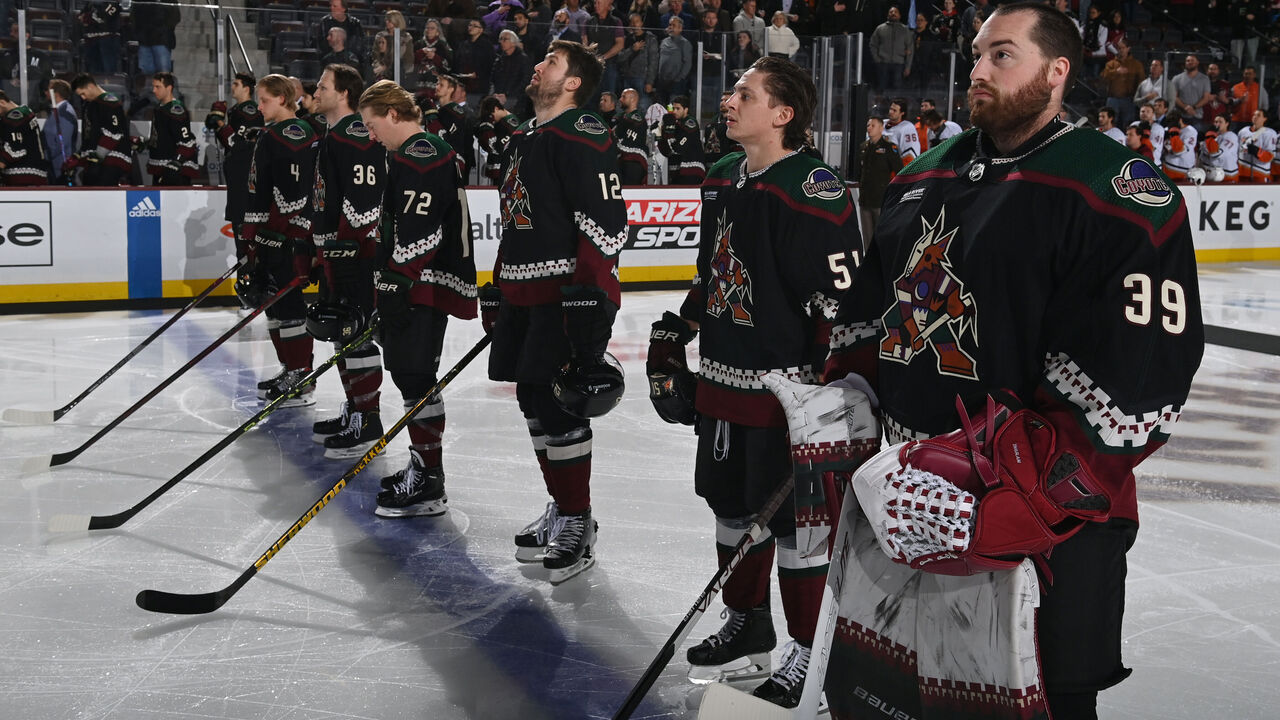
The second phase, which began this past offseason, revolves around being competitive - every night, no matter the opposition. It's about progress, even in defeat. After a thrilling comeback victory over the Senators on Tuesday, the Coyotes occupy the Western Conference's second wild-card spot thanks to a 16-13-2 record.
"Phase 3 is making the playoffs," Armstrong said between sips of coffee. "The other part of Phase 3 is consistency. Can you be consistent year after year?"
Off the ice, the consistency question is existential. The Coyotes, currently the secondary tenant in a 4,600-seat arena on Arizona State University's campus, desperately need a permanent home. Tempe residents shot down an arena and entertainment district proposal in May, leading ownership to pivot to a plot of land in Phoenix. According to reports, no arena deal is imminent.
With the team playing well, the off-ice drama and subsequent relocation chatter can be put aside for a moment. Here's why the Coyotes - a laughingstock for years - are finally headed in the right direction under Armstrong and head coach Andre Tourigny.
'Sit there and evaluate'
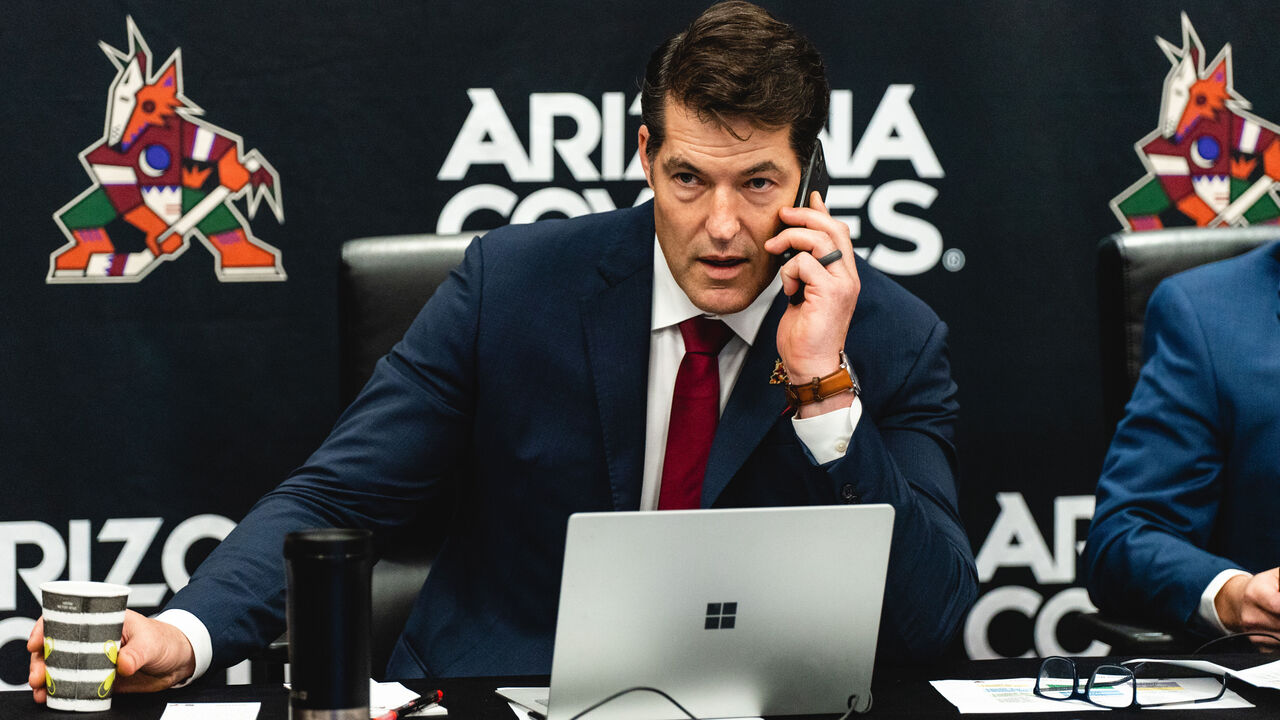
The Coyotes hired Armstrong a month after getting eliminated in 2020's expanded playoff tournament, the team's first and only postseason berth since 2012. The rookie GM picked the brains of his peers around this time, and the best advice came from his old boss, Blues GM Doug Armstrong (no relation).
"Sit there and evaluate," Doug Armstrong told Bill, a Blues amateur scout, scouting director, and assistant GM for 16 years. "The greatest thing you can do is evaluate for a full year to get a good understanding of where you are."
Armstrong mostly followed that plan. He finalized just one notable trade in his first nine months on the job - Derek Stepan to Ottawa for a second-round pick - before he flipped the switch. He rattled off nine trades around the 2021 draft and free-agency period. Fast-forward to the present, and Armstrong's Coyotes have made 35 trades and used 36 draft picks over a three-year, three-month span.
That's a ton of activity considering the NHL forced Arizona to forfeit a 2020 second-round pick and a 2021 first-rounder for violating combine testing protocol under former GM John Chayka. (The club also wasted a 2020 fourth on Mitchell Miller, renouncing his draft rights after public backlash to a bullying incident.)

These trades and picks go hand in hand because the roster was never going to be a quick fix. Armstrong knew his best, and perhaps only, chance at building a sustainable winner was to draft in high volume. In Phase 1, he retained salary three times in trades and acquired several retirement-bound players, including Shea Weber and Jakub Voracek ahead of the 2023 trade deadline, not only for the picks but also for financial reasons. Other teams needed to move money to fit under the salary cap ceiling, while the Coyotes needed to reach the cap floor.
Over the past three drafts, Arizona selected double the amount of players in both opening two rounds - six in the first and six in the second. Over the next three drafts, the team has three firsts and a whopping 10 seconds.
"Did I think we could generate that many picks? No. No. No, no, no, I didn't," Armstrong said. "But I'm a big fan of the second-rounders. Back in St. Louis, we had drafted (impact NHLers) Jordan Kyrou and Vince Dunn in the second, so I knew if you had a good staff, you could do some damage in that area."
Being in Phase 2 now, Armstrong signaled this past offseason that there's a finish line to the aggressive pick accumulation when he used a second to acquire promising defenseman Sean Durzi from the Kings. Can Armstrong definitively say the Coyotes are done absorbing other teams' bad business?
"Oh, it's over," Armstrong said with a laugh. "Yeah, it's done."
Brick-by-brick core
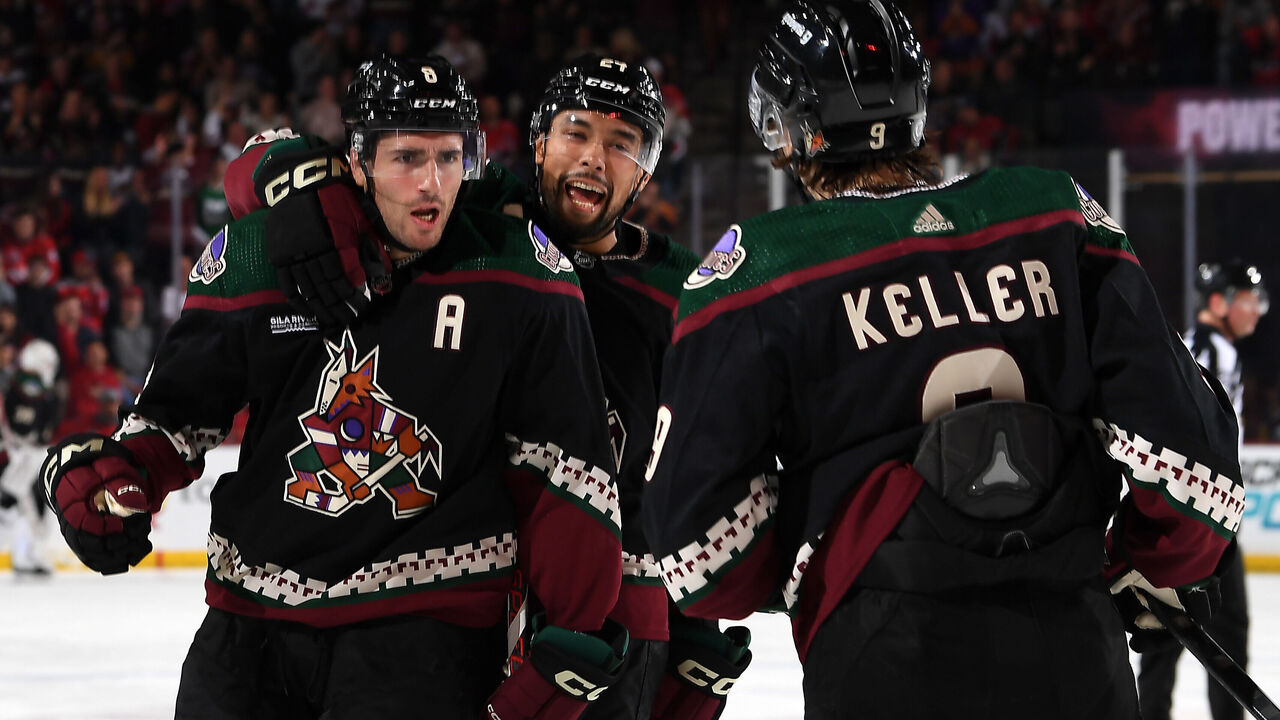
Over the past decade, under Chayka and Armstrong, the Coyotes have, to put it mildly, lowered the bar. They've rarely been competitive, at times icing lineups more worthy of the AHL than the NHL. It's been depressing to watch from afar.
Nevertheless, the seemingly endless rebuild has produced a robust core, led by the four originals - forwards Clayton Keller (acquired in the 2016 draft), Lawson Crouse (acquired in a 2016 trade), Nick Schmaltz (2018 trade), and Barrett Hayton (2018 draft). Forward Matias Maccelli (2019 draft) and defenseman J.J. Moser (2021 draft) joined them during the 2021-22 season.
All six skaters are 27 or younger and under team control for multiple years.
The core's third layer consists of four newcomers - forward Michael Carcone (2021 free agent), forward Logan Cooley (2022 draft), goalie Connor Ingram (2022 waiver claim), and Durzi (2023 trade). The rookie Cooley has flashed superstar potential. Ingram, picked up in October 2022, may be the long-term answer between the pipes. Durzi, an excellent puck-mover, has flourished in an elevated role. Carcone, the AHL's top scorer last year, has broken out this season.
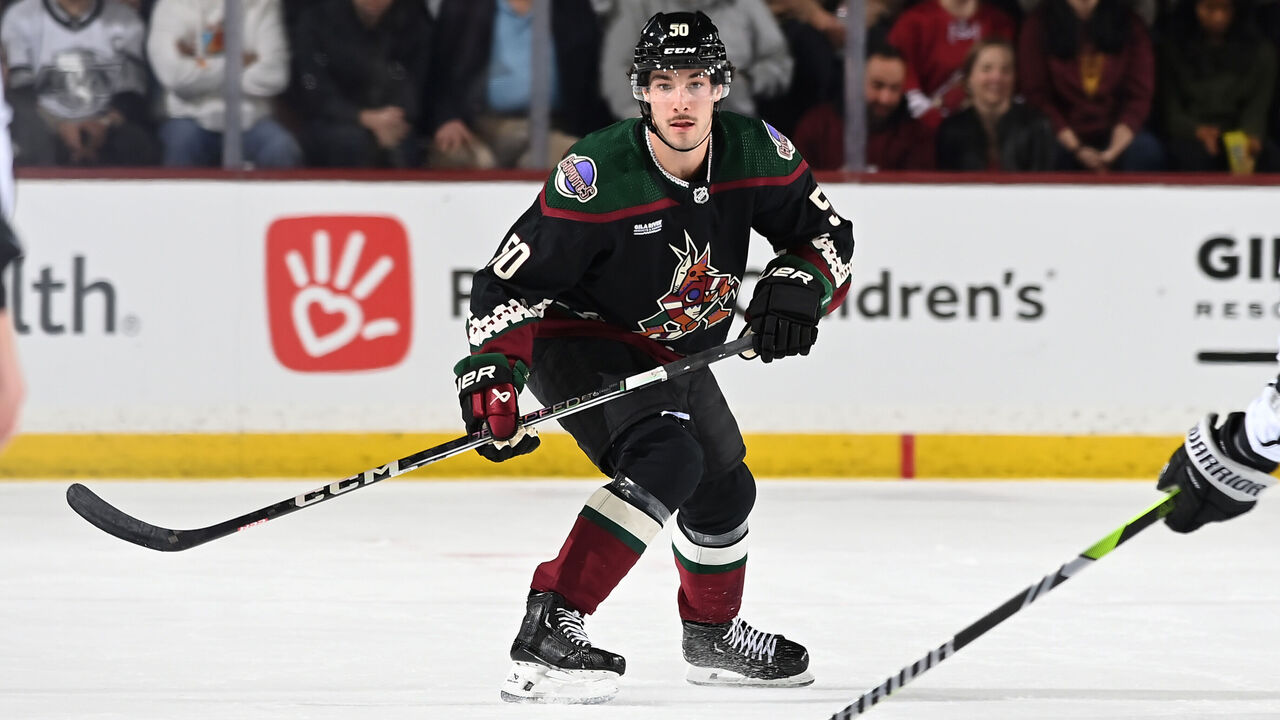
It's been a grind. But those 10 players represent the present and future.
"Each year, you bring more people into that core," said Crouse, the second-longest-tenured Coyote and an alternate captain. "We've done a great job with having a great locker room. We have a bunch of guys who want to be here and perform well and play their best. In the long run, that's a recipe for success."
As defenseman Travis Dermott explained, an NHL player must check two boxes to become a core piece for a franchise. One, the player must be wanted, and two, the player must be invested. He can't have one foot in and one foot out.
"There's no little cliques among the team," said Dermott, who also played in Vancouver and Toronto. "The superstar guys aren't just hanging out with the superstar guys - they're hanging out with everyone. The Euros are mixing in with the group - it's not their own little group. And that's pretty rare to see."
Tourigny impact
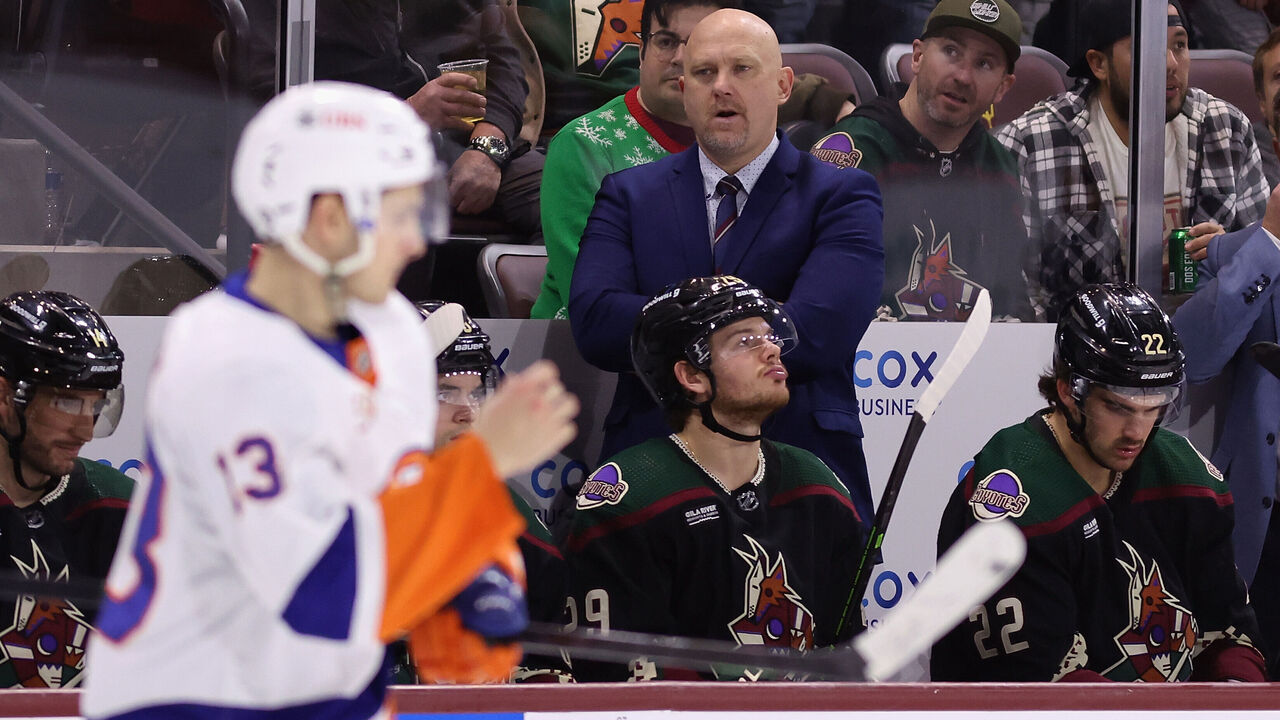
In talking with a handful of people around the league about Arizona's trajectory, one theme emerged: Tourigny, the third-year bench boss, has been arguably the biggest single driver of on-ice success. He's a core member, too.
"He's a very good teacher of the game. He's very good at communicating," Crouse said of Tourigny, who's tasked with coaching the NHL's fifth-youngest roster. "Nothing's given and everything's earned with him."
Added Dermott: "He's got the respect of everybody on our team. He's hard on you. If you take a shift off, a practice off, you're going to hear about it. But that's what keeps guys honest. On the other side of the coin, he's the one cracking the most jokes, and he's the one making sure guys have smiles on their faces. You don't see that too often from a head coach. He's personable."
Tourigny said he wants the Coyotes - who sit 19th in the league in goals for per game and 11th in goals against per game - to play "in-your-face type of hockey." He's taught his skaters to apply pressure in the neutral zone so the opponent can't get organized and attack in numbers or with speed.
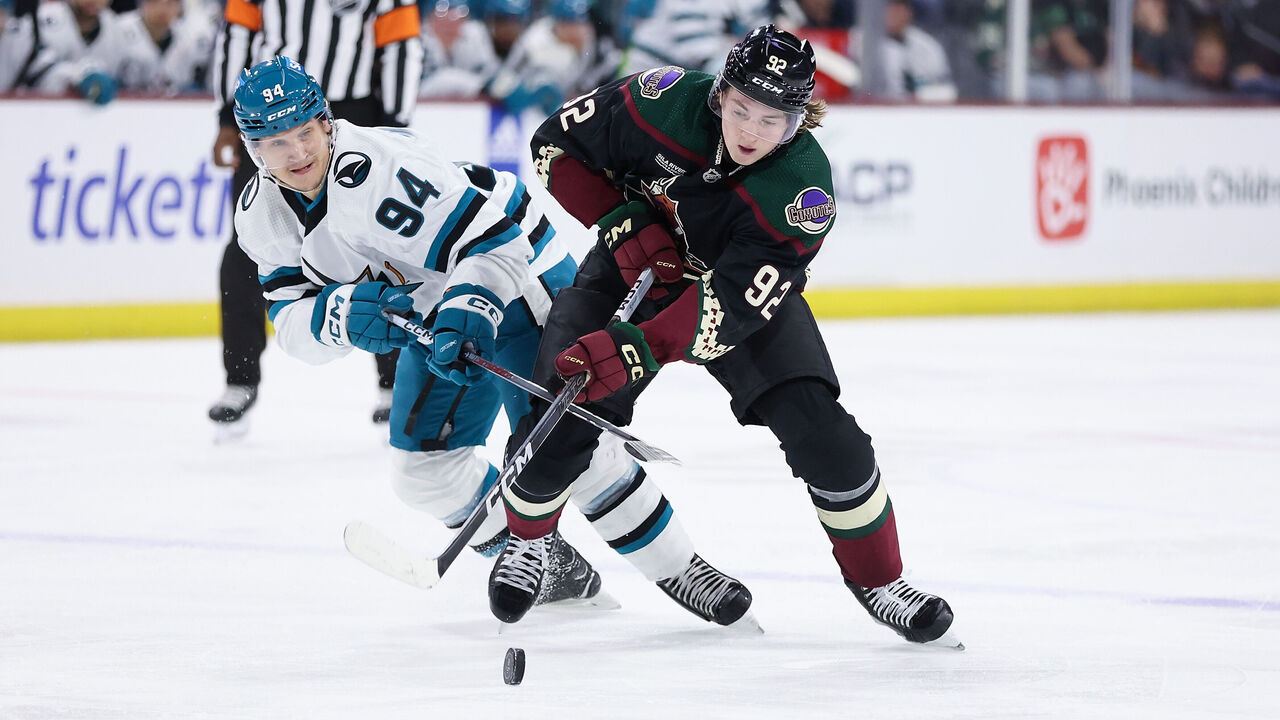
Of course, Arizona's 2.87 goals-against rate is also a byproduct of Vezina Trophy-caliber goaltending. Ingram boasts a .919 save percentage in 20 games, and his 0.58 goals saved above expected per 60 minutes is seventh among 35 goalies with at least 800 minutes played.
Meanwhile, the Coyotes' offensive identity consists of three pillars. They want to play with pace. They want to control the flow of play in the offensive zone. And they want to funnel pucks to the net from high-leverage spots in the zone.
"We're not a team who will shoot from anywhere," Tourigny said. "We're more a team who will hold onto the puck to create a better opportunity."
While there's progress to be made, the underlying data is starting to align with the pillars. On a per-game basis, the Coyotes rank 22nd in rush chances (up from 30th last season), third in offensive-zone possession time (22nd), second in slot passes (28th), and 29th in slot shots (30th), according to Sportlogiq.
Competent special teams are another marker of a club on the rise, and Arizona owns the 12th-ranked power play and 16th-ranked penalty kill. A strong indicator of a team still very much getting its act together: a poor five-on-five expected-goals share (the Coyotes rank 24th at 47.9%).

Tourigny's contract expires after the 2026-27 season, and Armstrong's after 2028-29, according to reports. Clearly, ownership is invested in the duo.
They were given plenty of runway for Phase 1. The intensity and pressure will ratchet up through Phases 2 and 3. Phase 4, which involves winning playoff series and challenging for the Stanley Cup, is merely a dream at this point.
The Coyotes aren't one or two pieces away from being a complete team, and not all of their high picks will blossom into everyday NHLers. There are 31 other clubs attempting to maintain or build a sustainable winner at all times.
In other words, nothing's guaranteed.
But, for the first time in forever, there's hope in the desert - on the ice, anyway.
"What I said in my opening press conference is true to this day," Armstrong said from his perch inside KeyBank. "They said, 'How do you change this organization?' I go, 'Just get one good player at a time and stack them on top of each other.' It's really about the players on the ice. It changes everything."
John Matisz is theScore's senior NHL writer. Follow John on Twitter (@MatiszJohn) or contact him via email ([email protected]).
HEADLINES
- Mammoth's Cooley out indefinitely with lower-body injury
- McKenna among 6 returnees for Canada's WJHC training camp roster
- Celebrini ties McDavid for NHL assists lead, Sharks beat Hurricanes
- Carlsson, Sennecke lead 1st-place Ducks' 7-1 rout of Blackhawks
- Capitals place Leonard, Lindgren on injured reserve